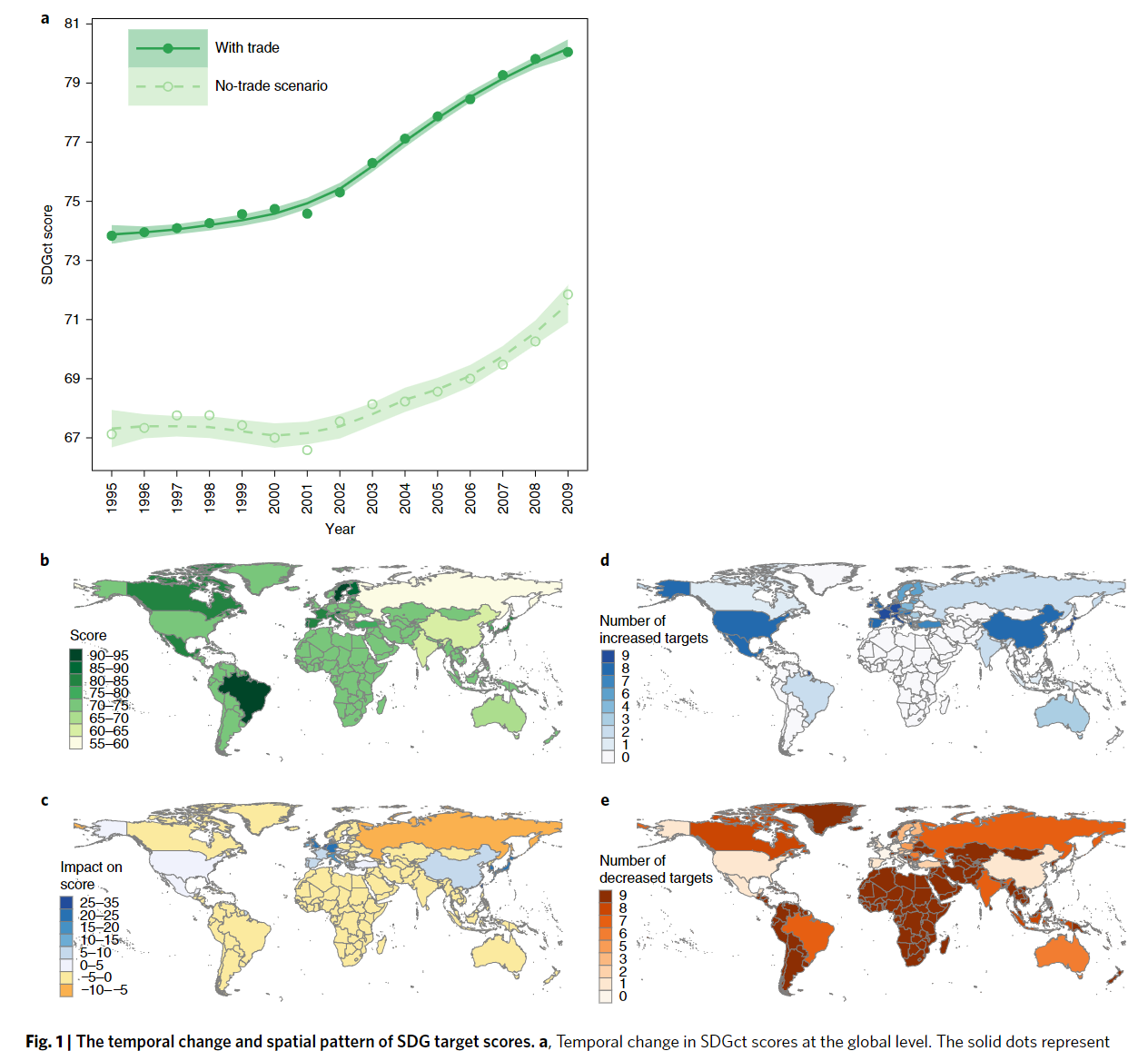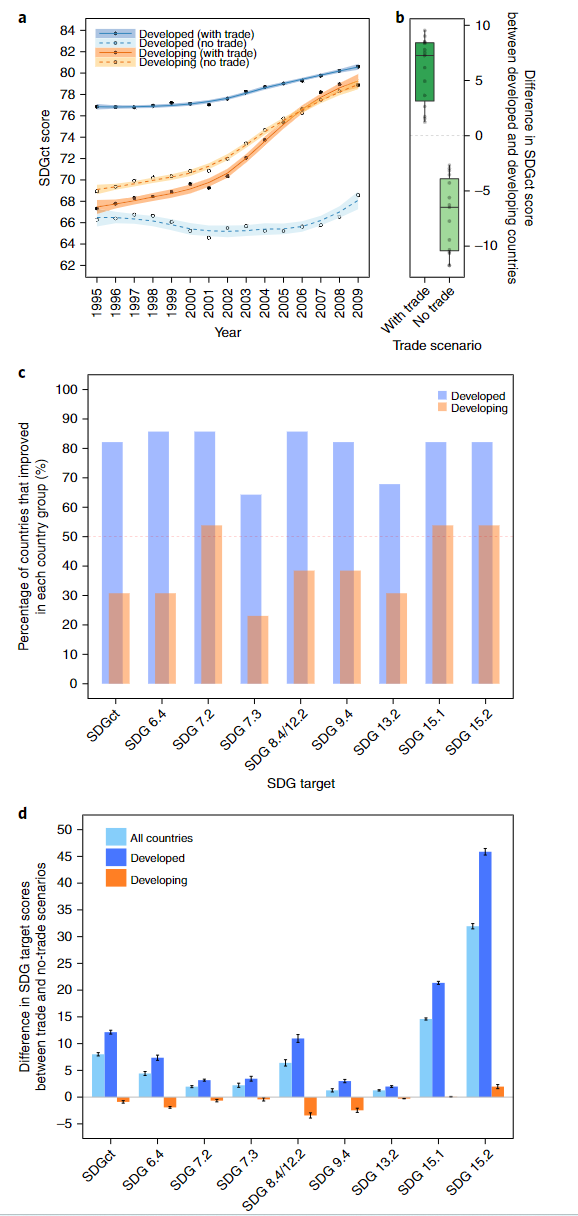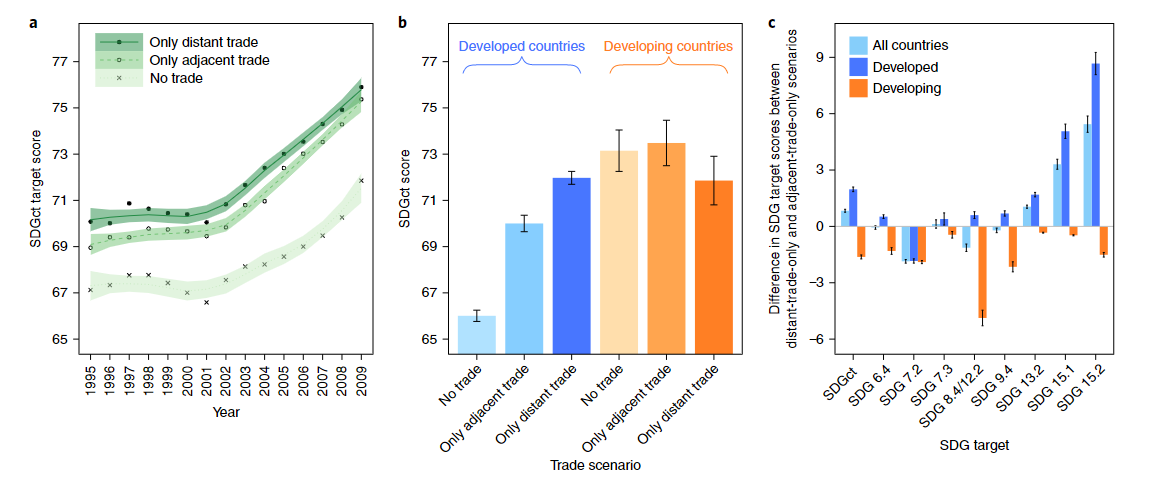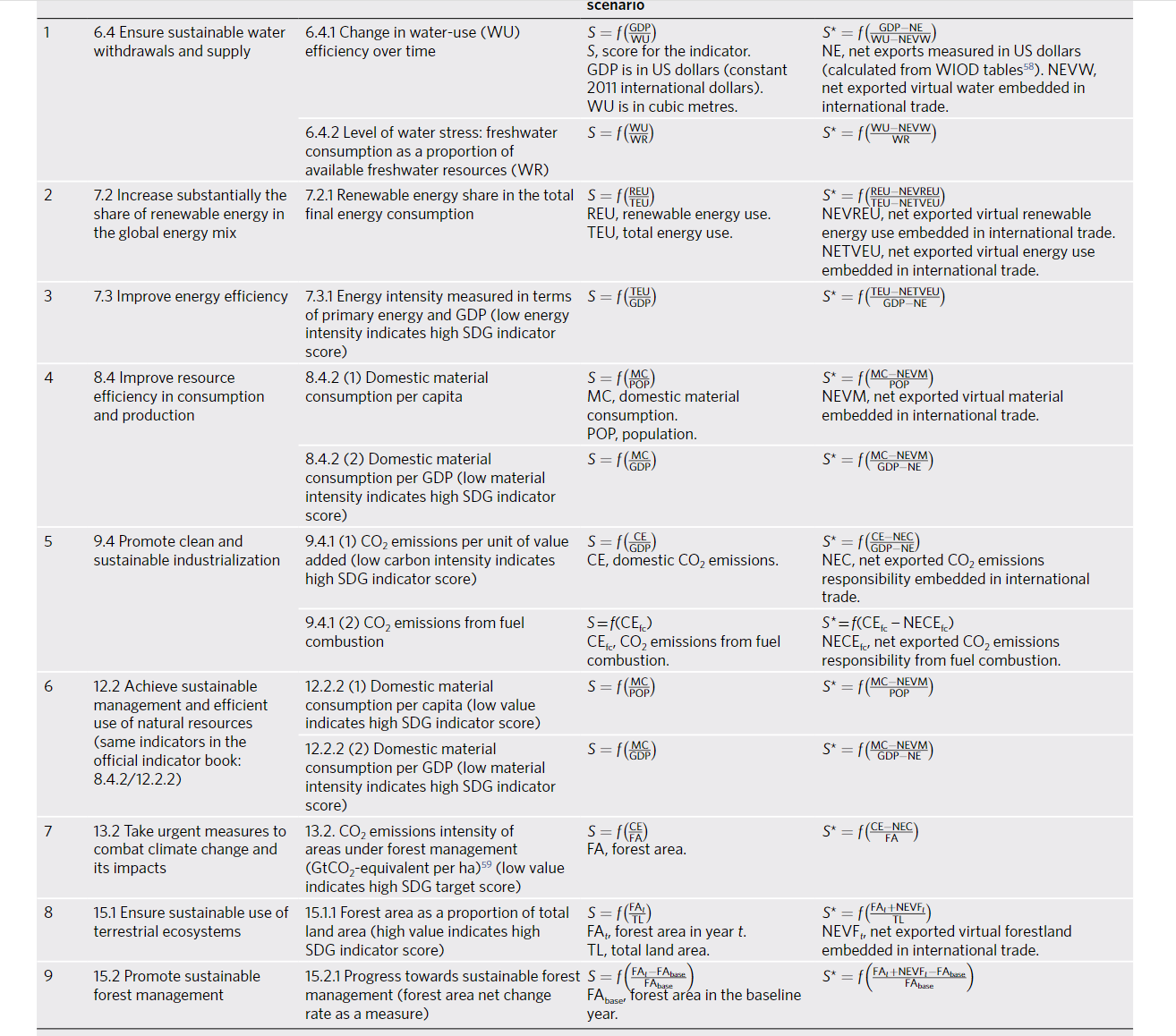Objective:
- Little research quantitatively assesses multiple aspects of SDGs simultaneously at the global scale
- Compre international trade between adjacent countries
Case:
Methodology:
- The monetary output $m$ of sector $i$ in $m$ country $R$:
- $x_i^R = \sum_{Q=1}^m \sum_{j=1}^n x_{ij}^{RQ} +\sum_{Q=1}^m y_i^{RQ}$, where $Q$ is also the original country. $y_i^{RQ}$ is the final demand.
- Direct input coefficient $a_{ij}^{RQ}$
- $a_{ij}^{RQ} = x_{ij}^{RQ} / x_j^Q$
- Let $X = [X_i^R]$, $A = [a_{ij}^{RQ}]$, and $Y = Y_i^{RQ}$
- $X = A \times X + Y$
- $X = B \times Y$, $B = (I-A)^{-1}$, where $(I-A)^{-1}$ is the Leontief inverse matrix
- Embeded resource:
- $e_i^R = w_i^R / x_i^R$, where $w_i^R$ is the total resource / material intensity, $e_i^R$ is the amount of resource / material consumed or emitted to increase one monetary unit of output
- Virtual resource:
- $VR = E \times B \times Y$
Data Source: Open
- Multiregional input-output table: WIOD
- World Bank
Findings:
- Global trend and spatial pattern of progress towards multiple SDGs goals
- International trade improved the global SDG score and positively affected progress towards achieving all nine SDG targets at the global level
- Different impacts across countries

- With trade, progress towards achieving the SDG targets improved in most developed countries but decline in most developing countries


- The SDG target scores of developed countries were higher than those of developing countries with international trade; but they would be lower than those of developing countries without trade

- Distant trade contributed more towards achieving the evaluated SDG targets than did adjacent trade
Coding Reference:




